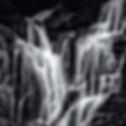Current Research
My big projects right now are research in theological aesthetics and a monograph on Richard of St Victor's trinitarian argument. This monograph is an accesible work of trinitarian ramified natural theolgy, and will be of interest to non-scholar, apologists, as well as those academically inclined.
This comes on the heals of two monographs, and . The books are on philosophy of art and beauty (contracted with IVP) and Richard of St Victor's trinitarian thought (Brepols). My research is focused on the relationship between art and revelation.
For more on these and other current research, look below!

what is art?
What is art? What is its purpose? What is the nature of creativity? What is the responsibility of the artist? How does beauty inform our understanding of art?
Part of IVP Academic's Questions in Christian Philosophy series, What is Art? grapples with and offer answers to the traditional philosophical questions in aesthetics. It considers major philosophical figures and their contributions to the historical discourse of aesthetics, including Plato, Aristotle, Hume, Kant, Hegel, Bell, and Danto.
But engagement with these questions, figures, and themes is guided first and foremost by the conviction that the central affirmations of the Christian faith should – indeed, must – inform our understanding and appreciation of the arts. My reflections thus revolve around the relationship between the being and activity of the triune God and humanity’s artistic endeavors.
can art reveal God?
When we behold art we often expect it to be significant in some way, to mean something. Great works of art meet that expectation by giving us new insight about the world. Indeed, in the words of Paul Klee, ‘art does not reproduce the visible; it makes visible’. Art has the power to reveal unseen reality, but can art reveal God?
Funded by the Templeton Religious Trust, the Art as Revelation project explores this question. Joining with world-class researchers in theological aesthetics, philosophy of art, and empirical psychology, I investigate ways that art helps us to open God's self-reveling.


what is a 'model' of the Trinity?
How is a model different from an analogy? Does the Athanasian creed give a doctrine of the Trinity? And just how is a doctrine different from a theory?
In Tools of Trinitarian Theology: Model, Metaphor, and Theory, I answer these and other questions. In the book I explore some chief means of doing trinitarian theology. Drawing from the great Christian tradition of trinitarian theologizing, I detail the nature and role of models and metaphorical language and analogies in trinitarian theorizing.

why think the one God is three persons?
For 2500 years Western thinkers have thought that the ultimate being has some sort of threeness. Greek philosophers reasoned that the highest Good is like a father who creates a divine son, who in turn causes a spiritual presence that fills all other created things. Early followers of Jesus Christianized this line of thinking and used it as part of their trinitarian apologetic. Medieval theologians expanded on these themes, developing sophisticated arguments as their faith sought further understanding. Protestant scholastics and enlightenment thinkers also continued to adopt and adapt triadic reasoning. Today, philosophers of religion draw from this rich tradition as part of the Ramified Natural Theology. My book, Peering Into the Flames: Triadic Speculation in the Western Tradition traces the major thinkers to trinitarian argumentation and articulates their chief contributions.


only humans form a 'we'...
Psychologists are increasingly convinced that human alone, among all the higher primates and other animals, form a 'we'. Humans alone, that is, engage in collective intentionality. This serves as the basis for all other expressions of culture, including language, art, and religion. Work from developmental, comparative, and evolutionary psychology can give us some insight into the human call to image its creator. My work applies these insights in considering the nature of personhood, both human and divine.